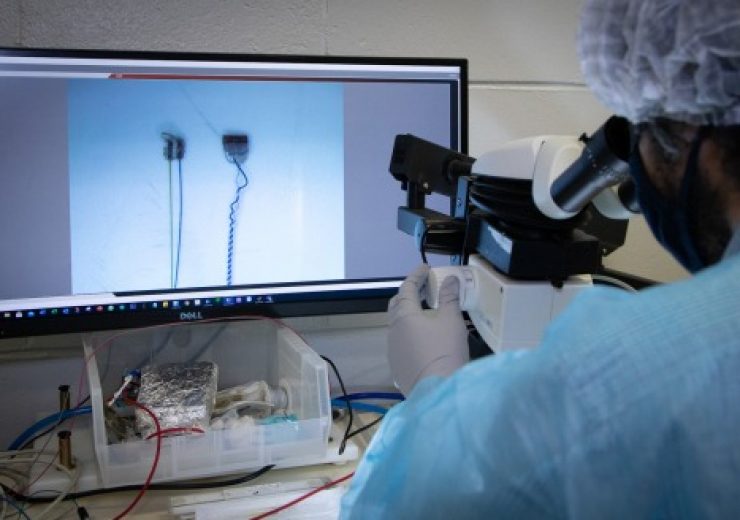The new VNS device and implant procedure are expected to benefit the preclinical bioelectronic medicine research

A Feinstein Institutes researcher examines long-term vagus nerve cuff electrodes. (Credit: The Feinstein Institutes for Medical Research.)
A research team at the Institute of Bioelectronic Medicine at Feinstein Institutes for Medical Research has developed a long-term implant model for vagus nerve stimulation (VNS) in mice.
The new long-term VNS implant model would modulate the heart rate and inflammatory proteins.
The device and procedure are expected to benefit the preclinical bioelectronic medicine research and facilitates alternative therapies for several chronic diseases.
The vagus nerve is a major nerve in the body that facilitates communication between the brain and other organs and regulates homeostasis.
Research on bioelectronic medicine evaluates how nerve mapping and modulation can affect the body’s function, primarily inflammation caused by autoimmune disorders.
Feinstein Institutes assistant professor Stavros Zanos said: “To better understand the power VNS may hold in treating some of the most devastating conditions and diseases, we needed a device to deliver long-term stimulation in preclinical studies.
“This new research will hopefully act as a blueprint for institutions worldwide to help advance the exciting field of bioelectronic medicine.”
In collaboration with the University of Colorado and New York University, the research was recently published in the scholarly journal eLife.
The new research elucidated the surgical technique to implant a mico-cuff electrode onto the cervical vagus nerve of a mouse, along with methods for calibrating its dose and evaluating its ability in reducing inflammation.
It is based on previous studies at the Feinstein Institutes in 2020, which demonstrated the effective use of a long-term vagus nerve implant in mice.
Previous VNS studies have been limited to short-term stimulation, within minutes to hours.
The new device addresses the limitation with its cuff-electrode and surgical procedure that facilitates long-term implantation for at least four weeks.
Furthermore, the new implant model would advance the research on long-term VNS, as implanting a stimulator that fits to mouse’s tiny vagus nerve was challenging earlier.
Feinstein Institutes president and CEO Kevin Tracey said: “This is an important new bioelectronic tool for mouse models of human disease.
“This technology is timely because it will enable many other labs to help us unravel the molecular and neuroscientific mechanisms of bioelectronic medicine.”
